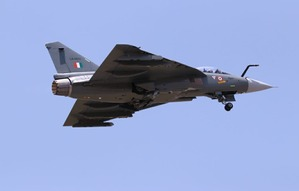
New Delhi — India is set to make a major leap in its aerospace and defence ambitions with an investment of around ?65,400 crore (approximately $7.44 billion) to design and produce indigenous fighter jet engines by 2035.
According to a Times of Oman report, the initiative aims to make India self-reliant in one of the most technologically challenging defence sectors — aircraft propulsion. The plan represents a major stride toward reducing dependence on foreign imports and powering the next generation of Indian combat aircraft with homegrown engines.
Over the next decade, India plans to manufacture about 1,100 jet engines to support advanced platforms such as the Tejas Mk2, the Advanced Medium Combat Aircraft (AMCA), upgraded fighters, and even unmanned combat aerial vehicles (UCAVs).
The ambitious programme is being spearheaded by S. V. Ramana Murthy, Director of the Gas Turbine Research Establishment (GTRE), who emphasized the creation of a robust ecosystem involving government research bodies, private industry, and global partnerships.
The Indian Air Force (IAF) is also aligning with this long-term vision, targeting a fleet strength of 42 squadrons by 2035, which will include roughly 450 new fighter aircraft — many expected to be powered by indigenous engines.
A key milestone in this roadmap is the Tejas Mk2, which builds upon the success of India’s homegrown Tejas light combat aircraft. Negotiations with General Electric (GE) for the F414 engine and its accompanying technology transfer agreement are expected to accelerate India’s ability to produce world-class jet engines domestically.
Meanwhile, India’s Kaveri engine project, which faced past delays, is now being revitalized with plans to adapt upgraded versions for use in future unmanned combat aircraft — a cornerstone of India’s evolving defence strategy.
Global collaboration remains a key component of the plan. Leading aerospace firms such as Safran (France), Rolls-Royce (UK), and GE (US) are in discussions to co-develop a fifth-generation engine for the AMCA, which is projected to have its first prototype ready by 2028.
For the first time, India is also opening the door for private sector participation in fighter jet and engine development, creating fresh opportunities for innovation, technology sharing, and job creation. Hindustan Aeronautics Limited (HAL) will work alongside private and international partners to distribute workloads and accelerate production.
Under Prime Minister Narendra Modi’s “Atmanirbhar Bharat” (Self-Reliant India) initiative, the government continues to push for the localization of advanced defence manufacturing and encourages foreign companies to establish production hubs within India.
Experts believe this monumental engine development effort will not only enhance India’s military readiness but also bolster its economy through job creation, exports, and technological advancement — positioning India as a rising global force in aerospace innovation.
With inputs from IANS